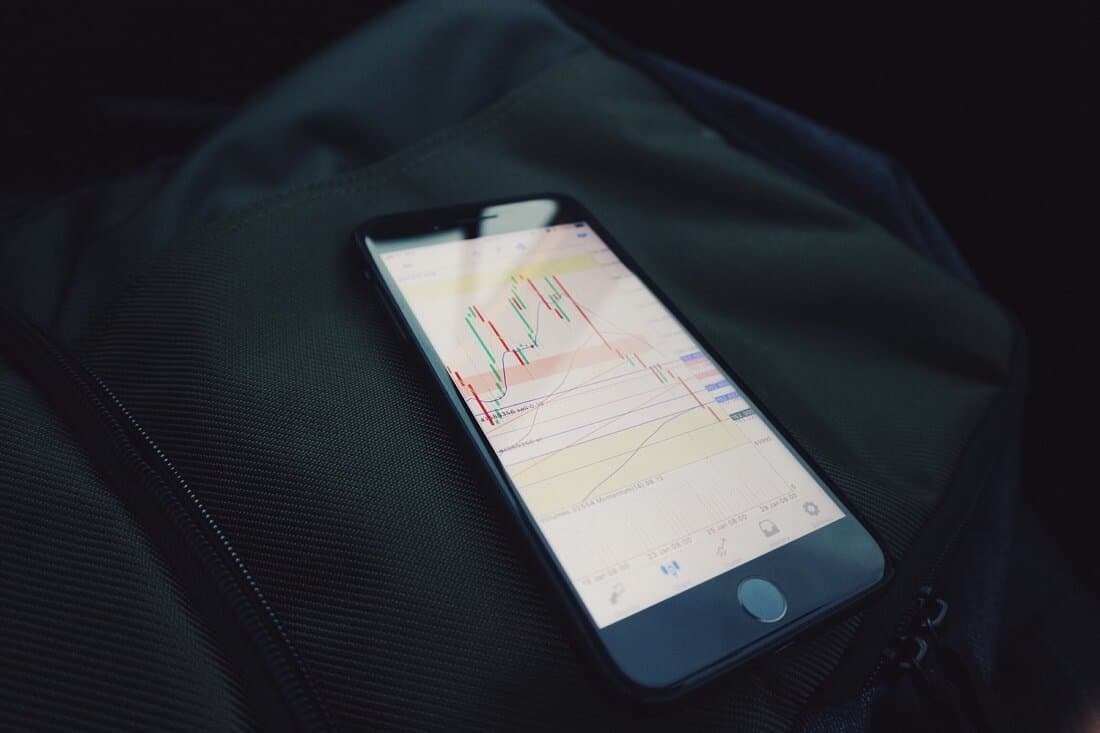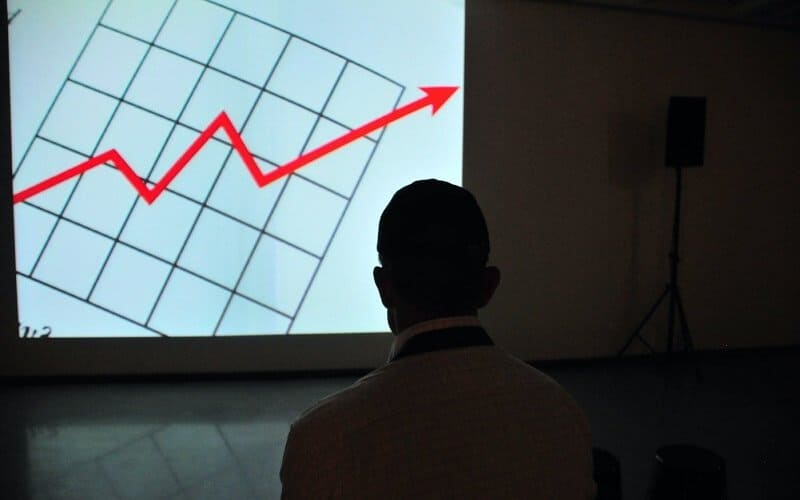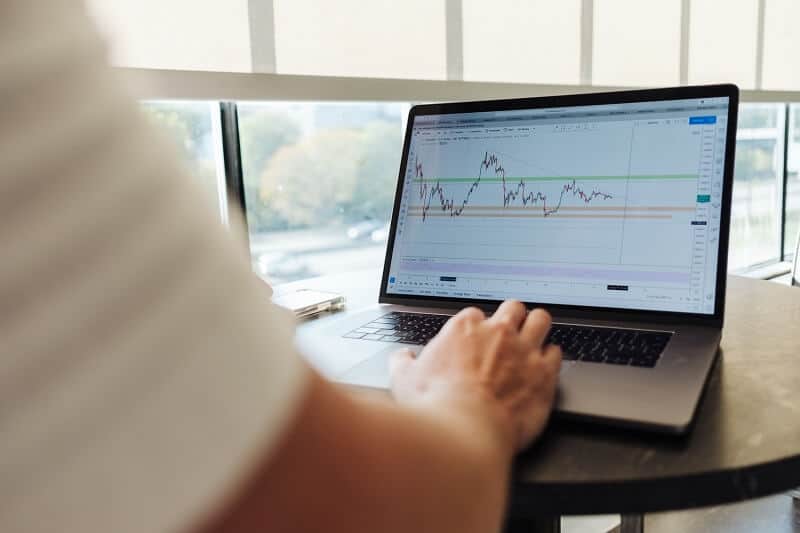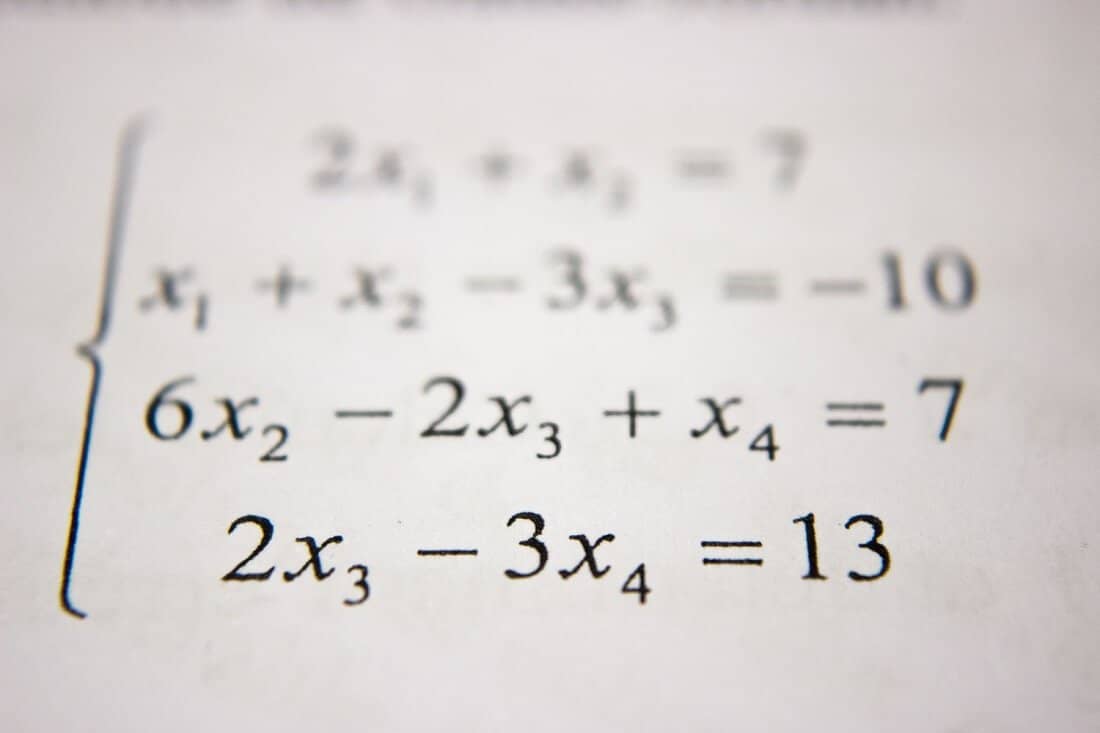(Updated October 2021)

Inverted Hammer candlestick pattern occurs essentially at the bottom of the downtrend and can warn of a possible reversal upward
Inverted Hammer candlestick pattern is visible on a chart during the higher pressure from buyers to push a stock price up. It is a bullish reversal pattern. This pattern is identified by a long upper shadow and a small real body. They usually appear following the real longer black body. It’s pretty similar to the Shooting star candlestick pattern. Inverted Hammer occurs in a downtrend. In trading charts, you’ll notice a long black candle visible on the first day of appearance. On the next day, you can see how a small real body develops. It will occur at the lower end of the range. The candle for the second day will have an upper shadow, two times longer than the real body, and will not have a lower shadow. Don’t pay attention to the color of the real body. It isn’t important at this moment.
What does the Inverted Hammer candlestick pattern tell us?
The long upper shadow indicates the buying pressure after the opening price. It is followed by significant selling pressure but insufficient to bring the price down, below the open. However, we’ll need bullish confirmation that may come as a long empty candlestick or a gap up, but followed by a heavy trading volume.
Inverted Hammer candlestick pattern tells us that bullish traders raise their confidence. The top of the candle is made when bulls push the price up the farthest they can. The bottom of the candle shows the bears attempting to resist that higher price. Bears are short-sellers. Still, the bullish trend is extremely strong, and the market is settled at a higher price.
Also, an inverted hammer candlestick pattern tells us that there could be a price reversal as a result of a bearish trend. Keep in mind, never observe the inverted hammer candlestick pattern solely. You’ll need confirmation of other technical indicators. Ultimately, check your trading plan before trading the inverted hammer.
What is the Hammer candlestick pattern?
A hammer pattern in candlestick charting is a price pattern. It happens when an asset trades lower than its opening price, but the rally is formed inside the given period, for example, one trading day, to close near the opening price. The pattern looks like a hammer. The lower shadow is a minimum twice the size of the real body. The body of the candlestick signifies the difference in the opening and closing prices and the shadow tells about the high and low prices for that period.
A hammer occurs after the price of security declines. That is the sign the market is trying to define a bottom. Hammer will appear when the sellers miss forming the bottom and push the price to rise and reverse. In short, the price drops after the open but later, closes near the bottom after regrouping.
A hammer candlestick doesn’t show a price reversal to the upside, it has to be confirmed. Confirmation means the next candle that follows the hammer, closes higher up to the closing price. On such occasions, traders usually enter the long position or exit their short positions. Traders that are taking long positions it is recommended to set a stop-loss below the low of the shadow.
The meaning of Inverted hammer pattern
It is important to understand that all inverted patterns imply that the price will change soon. It will not reveal a particular trend but it will warn you that the market will change its momentum.
Speaking about an inverted hammer pattern, its appearance shows the market is going up with buyers that are taking control. So, the price will go higher. Also, momentum changes, so the sellers are taking the price back to the level of the opening price. The pattern can send out many buys and sells signals in various cases.
Inverted Hammer is a trend reversal pattern, and it’s opposite to the hammer pattern. As a signal of bearish reversal, it comes after the stock price falls and symbolizes the strength. What does it look like? Let’s say the stock price tries to move up but the current downtrend blocks it. The bears push it down and form the top tail of the inverted hammer. At first glance, it may look like the trend is continuing since it arrives near a support zone and indicates the bullishness of the stock. And the war can start. The bulls against the bears, where the bulls are trying to launch the stock up to new higher levels.
How much the color is important?
It’s time to explain the color of the body of the inverted candlestick. It could be dark or light. The light body reveals that a stock closes higher and is more powerful than its peers.
When the uptrend is out of the scene the pattern is ready for the trend reversal. The stock price will go back to the opening price and probably stay around that price until the end of the trading day. You should wait for the next day and the new opening price. You’ll know if the stock goes down further or the buyers will give it another chance and take the stock to a better position.
The Inverted Hammer candlestick pattern is maybe one of the main reversal signals in stock trading. You must consider confirmation criteria before trading with this signal. The upper side has to be twice longer than the length of the body, while the lower shadow is very small or there is no, it’s invisible. You must be sure you have the right picture. Let’s say this way, the length of the upper shadow is directly proportional to the possibility of a reversal.
Also, if there is a gap down in comparison to the close of the prior day, it could be the base for strong reversal. Start trade the Inverted Hammer candlestick pattern the day after the appearance of the signal because in that period the stock will open higher. Consider one aspect more, it’s the level of the trading volume on the day when the inverted hammer signal appears. High volume will increase the odds of blow-off.
The logic behind this pattern
First of all, the market condition is bearish as a reply to a downtrend. The stock could start to trade higher, so the bulls will not have the necessary strength. Hence, we have sellers on the scene that are pushing the price down to the lower trading range. Generally speaking, the bears will dominate the market all trading day in such a case.
The bulls will attempt to recover power the next day causing the price jumps because the bears aren’t able to exercise the needed resistance. If the price sustains its strength even on the next day, you can be sure that you have the confirmation for the inverted hammer pattern.
If you want to trade an uptrend, you can “go long” which means you can buy. But if the signal isn’t strong enough and the downtrend will continue, so you can “go short” which means you can sell the stock or any other asset you hold.
Bottom line
Inverted Hammer candlestick pattern indicates a bullish reversal and it’s recognized in downtrends. Traders need this to decide on the next move. Keep in mind, this pattern isn’t the same as the shooting star pattern. There is a difference. Inverted Hammer candlestick patterns will never occur at the high of the trend line as the shooting star. Inverted hammer will always occur at the low of the trend but not as often as regular hammers. Sometimes, the signals that an inverted hammer may produce can be confusing. That’s the reason to double examine the length of the shadow. It is the most important.
Some experts will not recommend using this signal as a trigger for entry. Still, if you want to use it you’ll have an advantage if you wait for a bullish confirmation candlestick. This signal performs the best in time frames of four hours or one trading day. In longer time frames, use it as an entry signal to sell, but not to buy. Remember, the inverted hammer pattern must appear after a downtrend. The flat or sideways markets are something you will not like in trading this pattern.



















